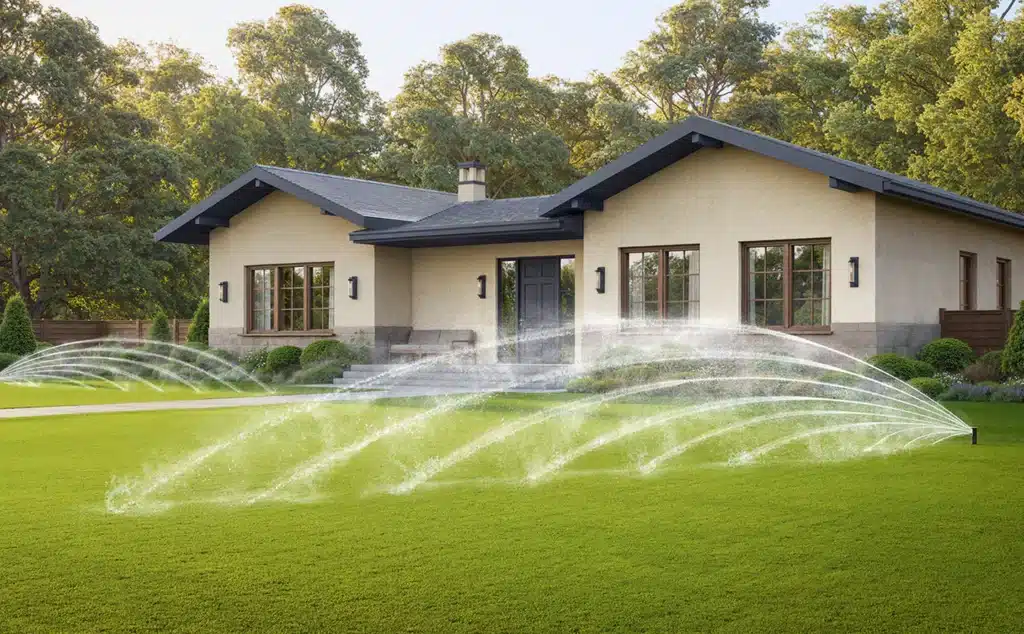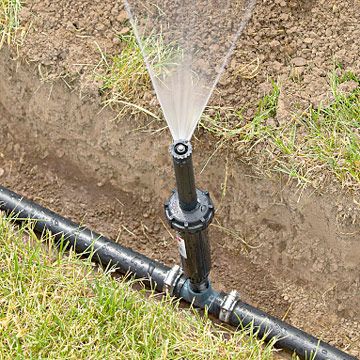Most homeowners take their sprinkler systems for granted. Turn the timer, water shoots out, grass stays green. But there’s actually a whole underground network working behind the scenes that most people never think about – and it’s way more interesting than you might expect.
The real star of your irrigation show isn’t the fancy rotating heads or the smart controller on your garage wall. It’s what’s happening dozens of feet below ground, where a sophisticated pumping system pulls water from deep underground sources and pushes it through your entire property with remarkable consistency.
What Actually Powers Your Water Supply


Here’s where things get fascinating. While some properties rely on municipal water systems, many smart homeowners have discovered the benefits of tapping into their own private water source. The mechanics behind this setup are surprisingly straightforward once you look up “how does a residential well work?” – you will know that it’s basically a high-tech version of the old-fashioned water wells you see in movies, but with modern pumps and pressure systems that can handle the demands of today’s irrigation needs.
The process starts with a well casing that extends deep into the ground, sometimes 100 feet or more, depending on your local water table. Inside this casing sits a submersible pump that’s designed to work completely underwater. This isn’t your garden-variety sump pump – these things are built to handle continuous operation and can push water upward with incredible force.
The Pressure Game That Makes Everything Work


Water doesn’t just magically appear at your sprinkler heads with perfect pressure. That underground pump has to create enough force to push water all the way up from the depths, through your home’s plumbing system, and then out to every corner of your property.
The pump works with a pressure tank system that acts as a buffer. When the pump kicks on, it fills this tank with water and compressed air. The compressed air then pushes the water through your system when you need it, which means the pump doesn’t have to run constantly. Smart engineering, really.
Most residential systems are set to maintain pressure between 40 and 60 pounds per square inch. That might not sound like much, but it’s exactly what your sprinkler heads need to create those perfect arcing streams that keep your lawn evenly watered.
Why Depth Matters More Than You Think


The deeper your water source, the more reliable your supply tends to be. Surface water can fluctuate with weather patterns and seasonal changes, but water from deeper underground sources stays remarkably consistent. This is why many irrigation-focused properties rely on wells that reach 75 feet or deeper.
But get this – deeper doesn’t always mean better. The key is finding the right aquifer for your specific area. Some regions have excellent water quality at 50 feet, while others need to go much deeper to avoid contamination or inconsistent flow rates.
The pump has to work harder to lift water from greater depths, which means higher electricity costs. It’s a balancing act between reliability and efficiency that experienced installers navigate based on your specific property and local water conditions.
The Technology That Keeps Everything Running Smooth

Modern well pump systems are packed with features that would amaze homeowners from even 20 years ago. Variable speed pumps can adjust their output based on demand, which means they’re not working at full capacity when you’re just watering a small flower bed.
Pressure sensors monitor the system constantly and can detect problems before they become expensive repairs. Some systems even send alerts to your phone if something seems off with water pressure or pump performance.
The control systems have gotten incredibly sophisticated too. They can be programmed to work with your irrigation timer, ensuring that your pump isn’t fighting against low-demand periods or trying to supply water during peak usage hours when efficiency drops.
What Happens When Systems Work Together


The real magic happens when your well pump system is properly integrated with your sprinkler setup. Professional installers design these systems to complement each other – the pump capacity matches your irrigation demands, the pressure settings work with your specific sprinkler heads, and the timing systems coordinate to maximize efficiency.
This integration prevents the frustrating problems that plague poorly planned systems: weak water pressure during peak watering times, pumps that cycle on and off too frequently, and uneven coverage that leaves some areas of your lawn struggling while others get flooded.
Signs Your Underground System Needs Attention

Even the best pumping systems need maintenance, and there are usually warning signs before major problems develop. Water pressure that drops noticeably during irrigation cycles often indicates pump wear or pressure tank issues. Strange noises coming from your pump house or utility area shouldn’t be ignored – these systems should run quietly when everything’s working properly.
Unexpectedly high electric bills can signal that your pump is working harder than it should, possibly due to worn components or system inefficiencies that have developed over time.
The Long-Term Investment That Pays Off


Quality underground pumping systems represent a significant upfront investment, but they typically pay for themselves through lower ongoing water costs and increased property value. Properties with reliable private water sources have become increasingly attractive to buyers who understand the long-term benefits.
These systems can last 15-20 years or more with proper maintenance, and they provide complete independence from municipal water restrictions during dry seasons. That peace of mind becomes especially valuable during drought years when other homeowners are watching their lawns turn brown.
The hidden network beneath your sprinklers represents some seriously impressive engineering. From the deep-set pumps to the pressure management systems, every component works together to deliver consistent, reliable water exactly when and where your landscape needs it most.
- 0shares
- Facebook0
- Pinterest0
- Twitter0


